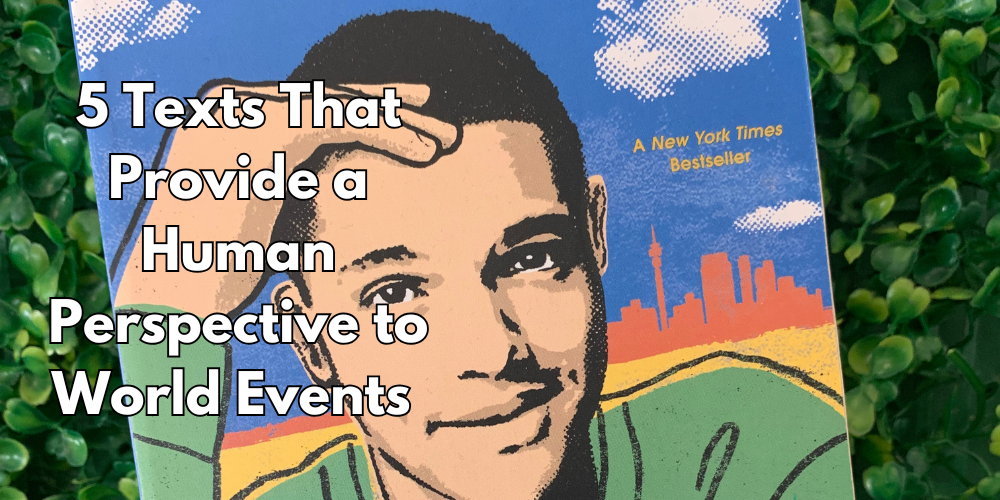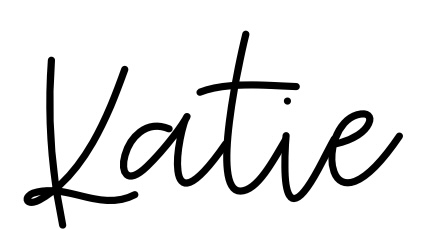5 Texts That Provide a Human Perspective to World Events
Sharing is caring!

I believe it’s essential for learners to explore stories and narratives revolving around world events because these texts help them develop a deeper understanding of global issues through personal and human perspectives. Unlike textbook summaries or news reports, stories offer emotional insight and cultural context, allowing students to connect with the people and communities affected by events. This helps in fostering deeper empathy, critical thinking, and a more nuanced perspective of history and contemporary issues. Broadening students’ worldviews also challenges stereotypes and enables them to appreciate diverse cultures and people, thus preparing them to become responsible, caring, and active global citizens.
Here are five texts that help provide human perspectives to historical and contemporary world events and their impact on students’ understanding of international relations.
Graphic Novel - This Place: 150 Years Retold
This Place: 150 Years Retold is a powerful graphic novel anthology that brings together Indigenous writers and artists to tell stories from the past 150 years of Canadian history from Indigenous perspectives. Each chapter highlights a different moment, figure, or movement—ranging from resistance and resilience to culture and reclaiming identity—spanning from the 1860s to the present and beyond. Through a blend of historical fact and imaginative storytelling, the anthology challenges dominant narratives and reveals the ongoing impacts of colonialism. This Place is both educational and emotionally impactful, offering readers a deeper understanding of Indigenous experiences, strength, and sovereignty.

Memoir: Trevor Noah: Born a Crime

Born a Crime by Trevor Noah is a compelling and often humorous memoir about the comedian’s childhood growing up in apartheid and post-apartheid South Africa. The title refers to the fact that Noah was born to a Black Xhosa mother and a white Swiss father at a time when such a union was illegal. Through a series of vivid, personal stories, Noah explores the challenges of living as a mixed-race child in a racially divided society, the strength and influence of his fiercely determined mother, and his journey toward finding his voice. The memoir blends sharp wit with powerful social commentary, shedding light on issues of race, identity, and resilience.
Short Story: The Shoes - Nassar Ibrahim
“The Shoes” is about Nizar, a man who has to travel to Ramallah, but faces severe Israeli military checkpoints and long arduous walks. Author Nassar Ibrahim describes his journey as a metaphor for the Palestinian struggle. They are like ants—resourceful, resilient, and trying to navigate destruction while adapting and attempting to move on with life. This narrative captures the oppression Palestinians have to face on a daily basis. It illustrates what was once felt unnatural has now become routine, yet people continue to resist.
If you are interested in sharing this story with your students, make sure to look at my reading resource for the text where you’ll find pre-reading and guided reading questions alongside lesson slides and station signs.

Graphic Novel Memoir: Persepolis - Marjane Satrapi

Persepolis by Marjane Satrapi is a graphic novel memoir that tells the story of the author’s childhood and early adulthood in Iran during and after the Islamic Revolution. Through stark black-and-white illustrations, Satrapi recounts her experiences growing up in a politically turbulent time, witnessing the fall of the Shah, the rise of the Islamic regime, and the impacts of war and repression on everyday life. The novel explores themes of identity, freedom, and resistance as Marjane struggles to reconcile her modern, progressive upbringing with the increasing restrictions placed on Iranian society. Persepolis offers a deeply personal and powerful look at the effects of political upheaval through the eyes of a young girl.
Novel: A Long Walk to Water - Linda Sue Park
A Long Walk to Water by Linda Sue Park is a powerful novel based on the true story of Salva Dut, a Sudanese boy forced to flee his village during the Sudan civil war. The book follows two parallel narratives: one of Salva’s harrowing journey across Africa as a refugee in the 1980s, and the other of Nya, a young girl in 2008 who spends her days walking long distances to fetch water for her family. As Salva faces loss, hunger, and danger, he eventually finds safety and later returns to Sudan to build wells and provide clean water to villages like Nya’s. The story highlights resilience, hope, and the life-changing impact of access to clean water.

Consider adding some of these narratives to your syllabus this year to help your students learn more about the world as they empathize and connect with people from all walks of life.
Do you already read some of these stories in your classroom? Let me know how your students like them! Join the conversation on my latest Instagram post!

© Mochas and markbooks 2025 | Template by Waymaker Designs |